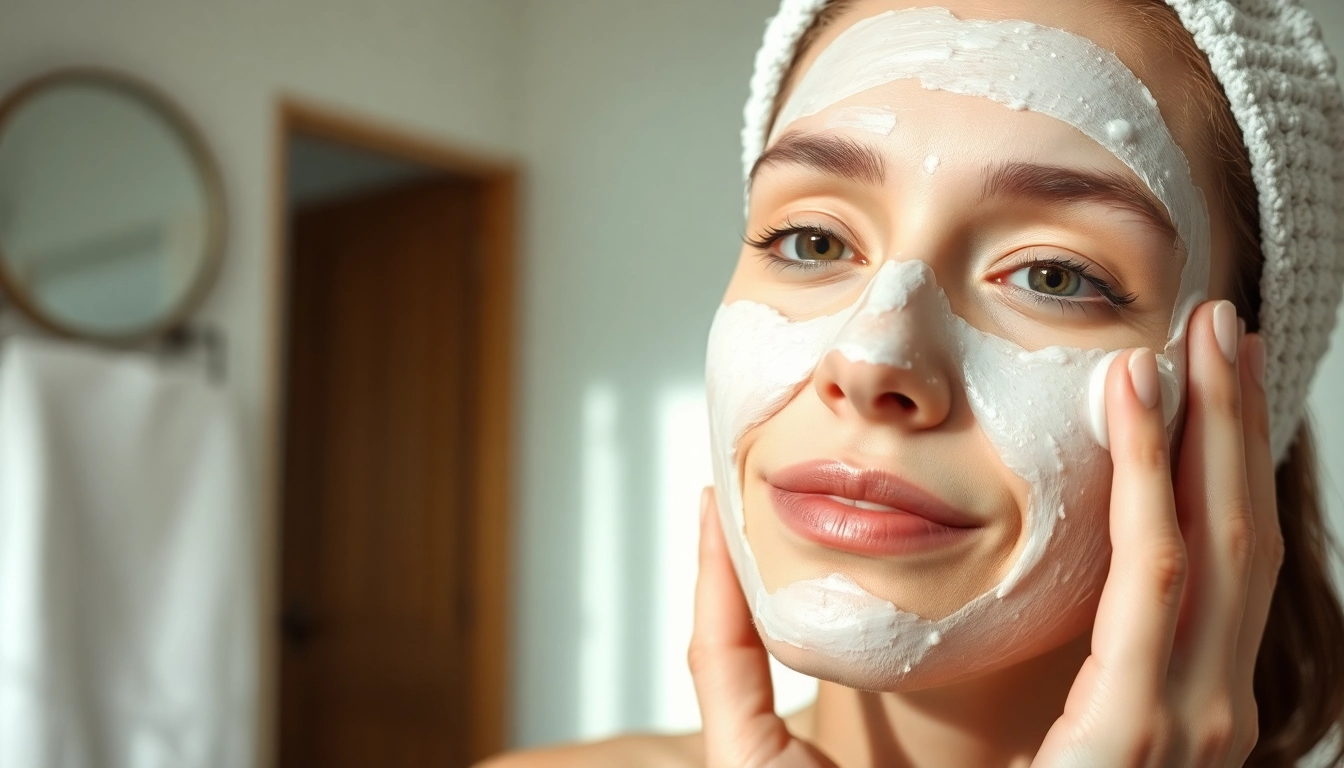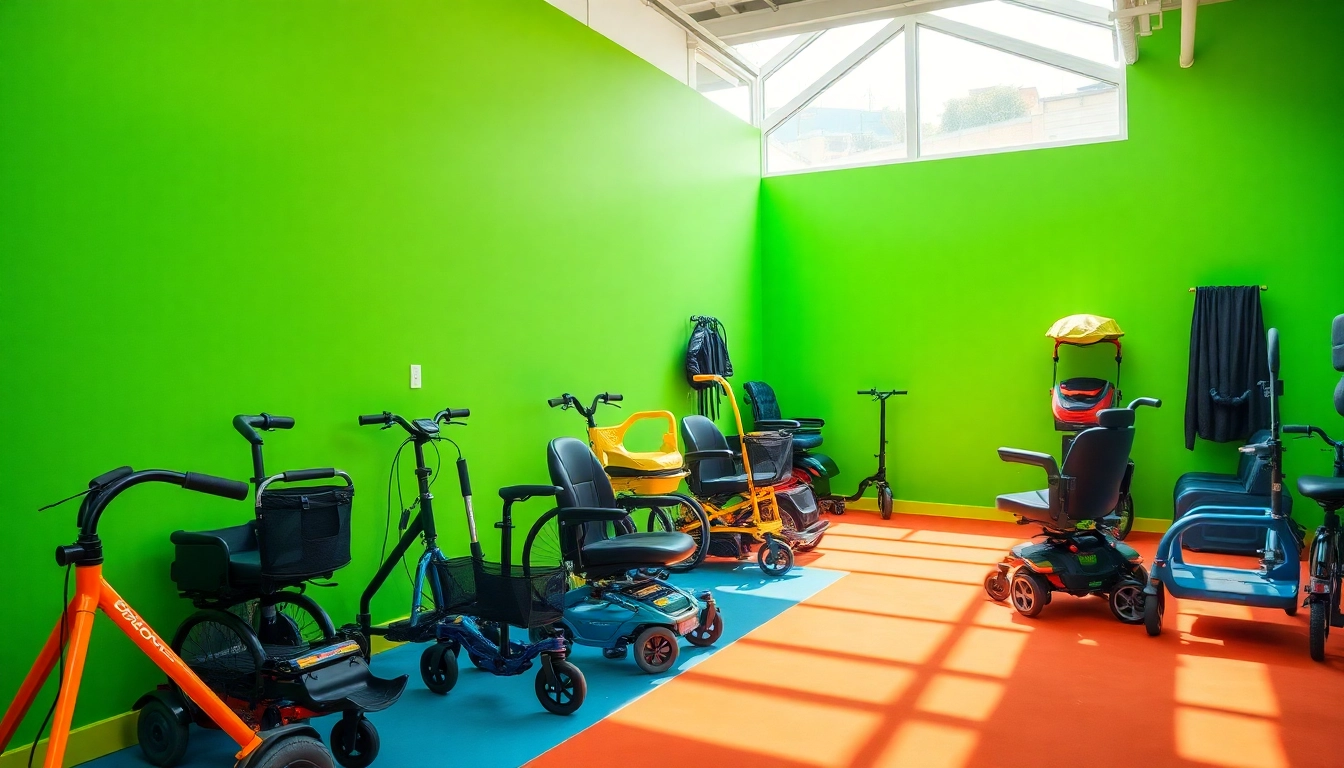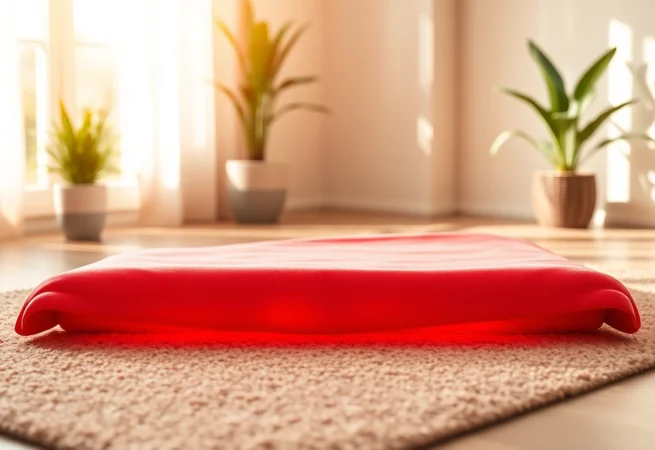

Revitalize Your Skin: Top Benefits of Using a Face Mask for Every Skin Type
Understanding Face Masks: Types and Their Benefits
Face masks have evolved into essential components of modern skincare routines, offering a wide array of benefits that cater to different skin types and concerns. With the multitude of products available, it’s vital to understand the various types of face masks and what they can do for your skin. By incorporating an appropriate face mask into your regimen, you can enhance your skin’s health and appearance significantly.
1. Different Types of Face Masks
Face masks can be broadly categorized into several types, each designed to address specific skin concerns. Here are some of the most common types:
- Cream Masks: These moisturizing masks are rich in emollients and provide a nourishing treatment, perfect for dry or sensitive skin.
- Clay Masks: Best for oily and acne-prone skin, clay masks absorb excess oil and impurities while drawing out toxins.
- Sheet Masks: Infused with serum, these masks deliver concentrated ingredients directly to the skin, making them ideal for a quick hydrating boost.
- Peel-off Masks: These masks offer exfoliation by removing dead skin cells and impurities once peeled away. They can improve skin texture and clarity.
- Exfoliating Masks: Often containing acids or enzymes, these masks gently exfoliate the skin, promoting cell turnover and revealing a brighter complexion.
- Sleeping Masks: Designed to be worn overnight, these masks work while you sleep, providing deep hydration and rejuvenating the skin.
2. Benefits of Each Face Mask Type
Understanding the benefits of each type can help you make informed choices based on your skin type:
- Cream Masks: They not only hydrate but also create a barrier that locks in moisture, making them ideal for combating dryness.
- Clay Masks: Beyond oil absorption, they can also help reduce the appearance of pores and improve overall skin clarity.
- Sheet Masks: Their easy application means they can provide a quick treatment for on-the-go hydration and radiance.
- Peel-off Masks: They offer immediate smoothness and luminescence, thanks to their exfoliating properties.
- Exfoliating Masks: They can significantly improve skin tone and texture, making the skin appear youthful and radiant.
- Sleeping Masks: Their unique formulation allows your skin to absorb active ingredients deeply while you rest, maximizing skin benefits.
3. How to Choose the Right Face Mask for Your Skin
Choosing the right face mask involves matching the product to your specific skin concerns:
- Identify Your Skin Type: Understanding whether your skin is oily, dry, combination, or sensitive is crucial. For instance, oily skin may benefit from clay masks, while dry skin may require hydrating cream masks.
- Assess Your Skin Concerns: Do you suffer from acne, aging, pigmentation, or dehydration? Targeted masks can provide enhanced results for specific issues.
- Check Ingredients: Look for masks that contain beneficial ingredients suited to your skin concerns, like hyaluronic acid for hydration, charcoal for detoxification, or vitamin C for brightness.
How Face Masks Enhance Your Skincare Routine
Incorporating face masks into your skincare regimen can significantly enhance its overall effectiveness and results. Here’s how:
1. Complementing Your Regular Skincare Products
Face masks are designed to provide additional benefits beyond what your regular skincare routine offers. By using a face mask after cleansing, you allow potent ingredients to penetrate deeper into the skin, boosting the efficacy of serums and moisturizers that follow. For example, a hydrating mask can prep your skin to better absorb a serum designed for anti-aging, enhancing its effects.
2. The Importance of Skin Preparation Before a Face Mask
Before applying a face mask, proper skin preparation is key to maximizing its benefits. Start with a gentle cleanser to remove makeup and impurities. Following cleansing, consider using a toner to balance your skin’s pH and further prep it for mask application. Exfoliating once or twice a week can also help in removing dead skin cells, allowing ingredients in the mask to penetrate better for more visible results.
3. Common Mistakes When Using Face Masks
While face masks offer numerous benefits, many people make common mistakes that can hinder results:
- Overusing Masks: Using masks too frequently can irritate the skin, especially for those with sensitive skin. It’s best to follow the manufacturer’s recommendations for frequency.
- Not Following Directions: Timing and application methods are critical. Always adhere to the recommended time and avoid applying too thickly.
- Skipping Moisturizer: After removing a mask, always follow up with a moisturizer to lock in hydration and nourishment.
DIY Face Masks: Natural Ingredients You Can Use
For those who enjoy customizing their skincare, DIY face masks offer a fun and economical alternative. Using natural ingredients can provide a wealth of benefits tailored to your skin’s specific needs.
1. Popular Natural Ingredients for Face Masks
Some popular natural ingredients that can be effective in DIY masks include:
- Honey: Known for its antibacterial and moisturizing properties, honey is an excellent ingredient for soothing and nourishing the skin.
- Aloe Vera: Renowned for its calming effect, aloe vera can hydrate, soothe, and heal irritated skin.
- Oatmeal: A gentle exfoliant, oatmeal can help reduce inflammation and itchiness while providing moisture.
- Coconut Oil: Rich in fatty acids, coconut oil can deeply hydrate the skin, making it a staple in many DIY masks.
- Yogurt: Containing lactic acid, yogurt can help exfoliate and moisturize, also brightening the skin.
2. Step-by-Step Guide for DIY Face Masks
Here’s a simple guide to create your own face mask at home:
- Choose Your Base: Depending on your skin type, select a base like yogurt for oily skin or honey for dry skin.
- Add Active Ingredients: Incorporate ingredients like mashed avocado for hydration or turmeric for brightening.
- Mix Well: Combine your ingredients into a smooth paste.
- Apply to Clean Skin: Use a brush or your fingers to apply the mask evenly, avoiding the eye area.
- Leave On: Allow the mask to sit for 10-20 minutes, then rinse with cool water.
3. Safety Tips and Considerations
While DIY masks are generally safe, consider these tips:
- Patch Test: Always perform a patch test on a small area of your skin to rule out any allergic reactions.
- Use Fresh Ingredients: To avoid bacteria growth, use fresh ingredients and store them in the refrigerator if not used immediately.
- Consult with Professionals: If you have specific skin issues, consult a dermatologist before trying new ingredients.
Face Mask Application Techniques for Best Results
Mastering the application of face masks can greatly affect the overall results you achieve. Let’s explore the best techniques for application:
1. How to Properly Apply a Face Mask
Applying a mask correctly sets the stage for effective results:
- Start with Clean Skin: Ensure your face is free from makeup and impurities.
- Use the Right Tools: Finger application can work, but brushes or spatulas promote even distribution.
- Apply Evenly: Use gentle, upward strokes, avoiding the eye and mouth area.
2. Timing: How Long to Keep a Face Mask On
The timing for keeping a mask on varies widely:
- Follow Instructions: Always adhere to the package instructions for the specific mask you are using, typically ranging from 10 to 30 minutes.
- Monitor Skin Sensation: If you experience irritation or discomfort, remove the mask immediately, even if it hasn’t reached the time limit.
3. Post-Mask Skincare: What to Do After
What you do after removing your mask is just as critical:
- Rinse Thoroughly: Use cool water to remove the mask completely, which helps to close the pores.
- Moisturize: Follow up with a moisturizer to seal in hydration and enhance the effects of the mask.
- Incorporate a Serum: This is a great time to apply a serum that addresses your specific skin concerns, taking advantage of your skin’s receptivity post-mask.
Measuring the Effectiveness of Your Face Mask
Understanding how to measure the effectiveness of your face mask will help in determining if it is right for your skin and what adjustments you may need to make.
1. Signs That Your Face Mask is Working
Being able to identify the signs of an effective mask can help guide your skincare choices:
- Improved Texture: After using a mask, your skin may feel smoother and look more even.
- Hydration: A noticeable increase in moisture levels can indicate that the mask is doing its job.
- Brightening Effect: Many masks improve brightness, leaving a refreshed appearance.
2. How to Incorporate Feedback into Your Routine
Assessing your experience with different masks can inform future usage:
- Journal Your Results: Keep a journal to document your results and how your skin responds to various masks.
- Adjust Based on Feedback: If a certain mask works well, you might want to use it more frequently or pair it with compatible products.
3. When to Seek Professional Advice
If you’re unsure about which masks to use or experience negative reactions, consulting a dermatologist can provide expert guidance and recommendations tailored to your skin type and concerns.

Empower Your Mobility: Essential Equipment for Enhanced Independence
Understanding Mobility Equipment
What is Mobility Equipment?
Mobility equipment encompasses a wide range of devices designed to assist individuals with mobility challenges, enabling them to move around more freely and maintain their independence. This equipment is vital for those who may struggle due to age, injury, or physical disability. From wheelchairs and scooters to walkers and canes, these tools are tailored to enhance mobility and improve the quality of life for users.
Designed with various functionalities in mind, mobility aids can be both manual and powered, allowing individuals to select the option that best suits their needs. Some common types include mobility equipment such as electric scooters, manual wheelchairs, stairlifts, and mobility scooters, each serving a unique role in enhancing user accessibility and independence.
Types of Mobility Equipment Available
There are many types of mobility equipment tailored to meet different needs and preferences:
- Wheelchairs: Available in manual and electric forms, wheelchairs can accommodate a variety of users, from those who can self-propel to those who require assistance.
- Mobility Scooters: Ideal for outdoor use, mobility scooters offer a stable platform with comfortable seating and controls that mimic a car’s driving experience.
- Walkers and Rollators: These devices provide support for users who can walk but may need stability; rollators come equipped with wheels and brakes for improved mobility.
- Canes: Simple yet effective, canes come in various styles and sizes, providing support and balance for those who need a little extra assistance.
- Stairlifts: For homes with stairs, stairlifts provide a motorized option to help individuals transition between levels safely and easily.
- Lift Chairs: These chairs assist users in standing up or sitting down, serving both comfort and practical mobility needs.
Benefits of Using Mobility Equipment
Utilizing mobility equipment can have profound effects on a person’s life. Here are some of the key benefits:
- Increased Independence: Mobility aids empower users to navigate their environments without relying solely on caregivers, leading to greater freedom and self-sufficiency.
- Improved Quality of Life: With the ability to move with relative ease, users can engage in activities they enjoy, socialize, and participate in their communities.
- Enhanced Safety: Mobility equipment reduces the risk of falls or injuries, allowing users to move confidently within their spaces.
- Better Health Outcomes: Regular mobility can contribute to improved physical health by encouraging activity and reducing the risks associated with a sedentary lifestyle.
- Customized Solutions: With a variety of equipment available, individuals can choose devices that specifically suit their physical conditions and lifestyles.
Choosing the Right Mobility Equipment
Factors to Consider When Selecting Equipment
Selecting the right mobility equipment is a critical process requiring careful consideration of multiple factors:
- Physical Needs: Assessing the user’s specific mobility limitations is paramount. Factors such as weight capacity, necessary support level, and usage environment will influence the choice.
- Usage Environment: Consider where the mobility equipment will primarily be used. Indoor use requires different features than outdoor, particularly regarding terrain adaptability and storage.
- User Preferences: The comfort and personal preferences of the user must be included in the decision-making process. Aesthetic choices, adjustability, and ease of use are significant considerations.
- Budget Constraints: Mobility equipment varies greatly in price. Establishing a budget and exploring options within that range while ensuring quality is essential.
- Durability and Warranty: Evaluate the materials and construction of the equipment. Equipment with warranties can provide added peace of mind and protection for your investment.
Comparing Different Mobility Options
With so many types of mobility equipment available, comparing options side-by-side can help clarify the best choice for a user’s specific situation. Key considerations to compare include:
- Performance: Look at how well each option meets the user’s needs in terms of speed, range (for electric devices), and ease of control.
- Portability: For users who travel or need to transport their equipment, foldable models or lightweight designs may be beneficial.
- Customization: Many manufacturers provide options for add-ons or modifications, enhancing usability for particular conditions.
- Reviews and Ratings: Customer testimonials and expert evaluations can provide insight into the equipment’s reliability and performance in real-world situations.
Consultation with Healthcare Professionals
Seeking advice from healthcare professionals is invaluable when selecting mobility equipment. Occupational therapists, physical therapists, or mobility specialists can provide personalized recommendations based on the user’s medical history and physical capabilities. These professionals can assist in evaluating:
- The appropriate type of mobility aid that aligns with medical diagnoses
- Exercises that may improve mobility and strength
- Techniques for safe operation and daily use of mobility aids
- Insurance or financial aid options available for purchasing mobility equipment
Enhancing Accessibility at Home
Adapting Living Spaces for Mobility Equipment
Ensuring a home environment is conducive to mobility equipment use is essential for maximizing safety and comfort. Common adaptations include:
- Wider Doorways: For wheelchair users, having doorways widened can facilitate easier movement between rooms.
- Ramps: Installing ramps at entrances can assist users who cannot navigate stairs, making the home more accessible.
- Clear Pathways: Keeping floors clear of obstacles and clutter helps reduce the risk of falls and allows easy navigation.
- Grab Bars: Strategically placing grab bars in bathrooms or hallways can provide additional support and confidence.
- Accessible Furniture: Selecting furniture that accommodates mobility aids—like chairs that are higher or lower—can also improve comfort and accessibility.
Common Home Modifications
In addition to general adaptations, certain home modifications can further enhance accessibility:
- Bathroom Modifications: Installing walk-in tubs or roll-in showers can make personal hygiene routines safer and easier.
- Kitchen Modifications: Lowering countertops and using pull-out shelves can aid users in meal preparation, ensuring that everything is within reach.
- Smart Home Technologies: Incorporating smart devices can assist in operating lights, thermostats, and security systems, offering users more control.
Living Independently with Mobility Aids
While mobility aids can significantly enhance independence, they also play a pivotal role in improving self-esteem and overall well-being. Users can take pride in accomplishing personal tasks, engaging in community events, and enjoying social interactions without feeling confined. Strategies to maintain independence include:
- Creating a Routine: Establishing a daily routine that incorporates physical activity can bolster mobility and confidence.
- Exploring Community Resources: Participating in local support groups or activity centers can provide both socialization and additional physical support.
- Ongoing Education: Learning about new mobility technologies, products, or techniques helps users make informed choices regarding their equipment.
Maintaining and Caring for Mobility Equipment
Regular Maintenance Tips for Longevity
Proper care and maintenance of mobility equipment are crucial to ensure safety, performance, and longevity. Here are some essential maintenance tips:
- Regular Inspections: Check the equipment for signs of wear and tear, such as fraying seats, rusted parts, or loose connections, and address issues immediately.
- Cleaning: Depending on the type of equipment, regular cleaning can prevent dirt buildup and odors. Use appropriate surface cleaners and solutions that match material types.
- Battery Care: For electric devices, maintain batteries by following proper charging habits and replacing them as recommended by the manufacturer.
- Professional Servicing: Scheduling periodic, professional maintenance checks can identify potential issues before they become significant problems.
Storing Your Mobility Equipment Properly
When not in use, proper storage of mobility equipment is essential:
- Dry Conditions: Avoid damp environments that can lead to rust or deterioration of electrical components. Store equipment indoors when not in use.
- Protective Covers: Using protective covers can shield equipment from dust and damage.
- Organized Storage: Designate a specific storage area, ensuring that equipment is easily accessible and free from obstructions.
Upgrading Your Equipment When Necessary
As needs change, it may become necessary to upgrade mobility equipment to better suit users’ current lifestyles and challenges. Indicators for an upgrade include:
- Changes in mobility status or physical condition
- Advancements in technology that provide better features or safety mechanisms
- Signs of wear that compromise the functionality of the equipment
Staying informed about new options and enhancements in mobility equipment allows users to make proactive decisions about upgrades, ensuring that they receive the best support available.
Success Stories: Real Users of Mobility Equipment
How Mobility Equipment Changed Lives
Many individuals have remarkable stories of transformation and empowerment through the use of mobility equipment. These personal narratives highlight how mobility aids have had a significant, positive impact on their lives:
- John’s Journey: After an accident left him paraplegic, John regained his independence with a custom-made wheelchair that allowed him to navigate both his home and local community.
- Mary’s Mobility Scooter: Living with severe arthritis presented numerous challenges for Mary until she acquired a mobility scooter, enabling her to visit friends and engage in her favorite hobby, gardening.
Inspiring Testimonials from Users
Users frequently express profound gratitude for the freedom mobility equipment has provided. For instance:
“Thanks to my walker, I’m able to go on morning walks with my dog again—I can’t express how much this means to me.” – Sarah, 68
“Transitioning to my powered wheelchair was a game changer. It didn’t just improve my mobility; it transformed my life.” – David, 52
Community and Support Resources Available
Community resources play a vital role in the ongoing support and care for mobility equipment users. Local disability advocacy organizations, community health services, and online forums offer guidance, resources, and social connections for individuals needing mobility aids. These platforms provide users with:
- Access to educational materials regarding correct usage and maintenance
- Opportunities for social engagement to reduce feelings of isolation
- Workshops that offer mobility training and physical support strategies
- Networking with other users to share experiences and tips

Strategies to Grow Audience Engagement for Musicians and Creators
Understanding Your Current Audience
Before diving into strategies for growth, it’s crucial to have a firm grasp of who your current audience is. This foundational understanding will inform your content creation, engagement tactics, and overall marketing strategies. Use this insight not just to cater to existing followers but to identify potential new audience segments that could benefit from your content, allowing you to Grow Audience effectively.
Identifying Audience Demographics
Demographics are critical in understanding the makeup of your audience. Age, gender, location, income level, and education can significantly influence how your audience engages with your content. Utilize analytics tools like Google Analytics or social media insights to segment your audience. This data allows you to tailor your messages, ensuring they resonate with specific groups. For instance, a younger audience may prefer video content on platforms like TikTok, while older demographics might engage more with blog posts or Facebook updates.
Analyzing Audience Behavior
Demographic data tells you “who” your audience is, but behavior analysis reveals “how” they interact with your content. Track metrics such as time spent on your site, pages viewed per session, bounce rates, and engagement rates on social media posts. Employing engagement funnels can help visualize the customer journey, providing insights into what keeps your audience engaged and what potential content gaps exist. Tools like Hotjar or Crazy Egg can also give you visual representations of user interaction through heatmaps and session recordings.
Gathering Feedback and Insights
Your audience’s voice is invaluable. Regularly gather feedback through surveys, polls, and direct engagement on social media or during live events. Utilize platforms like SurveyMonkey or Typeform to create engaging questionnaires that elicit meaningful responses. This feedback loops back into your strategy, helping you refine your content and ensure it aligns with what your audience desires and needs.
Content Creation Strategies to Grow Audience
Content remains king in the digital world, and the way you create and distribute it can either facilitate or hinder audience growth. Let’s explore effective content strategies that will help you reach and engage a broader audience.
Leveraging Social Media Platforms
Social media is an incredibly potent tool for audience growth. Platforms such as Instagram, Twitter, TikTok, and Facebook each offer unique capabilities that can help you connect with different audience segments. Design distinct content strategies for each platform; for example, eye-catching visuals work well on Instagram, whereas short, entertaining clips are ideal for TikTok. Utilize organic posts and paid advertisements to boost visibility, especially when promoting events or launches.
Creating Engaging Multimedia Content
Today’s audiences crave multimedia content. Diversifying your formats by incorporating videos, podcasts, infographics, and even interactive content (like quizzes and polls) can appeal to various audience preferences. For instance, a musician might post behind-the-scenes videos or a podcast discussing their creative process. This not only keeps existing fans engaged but also draws in new audience members who prefer different media formats.
Utilizing User-Generated Content
User-generated content (UGC) is an exceptionally effective way to instill trust and foster a sense of community around your brand. Encouraging your audience to share their experiences, such as using a specific hashtag when attending your concert or event, not only broadens your reach but also engages your existing audience. Implement UGC campaigns on social media, showcase the best submissions, and consider using fan art or testimonials in your marketing materials.
Building Authentic Connections
Growing your audience isn’t merely about metrics; it’s about forging genuine connections. Here are some strategies to deepen those relationships.
Engagement Through Live Events
Live events—whether they are in-person concerts, Q&As, or webinars—offer unique opportunities to engage with your audience in real-time. These events foster a stronger community and allow for spontaneous interactions that can lead to deeper loyalty. Consider hosting regular live streams where you perform, answer fan questions, or share insider insights into your creative process.
Collaborating with Other Creators
Collaborations can introduce your work to entirely new audiences. Partnering with other musicians, artists, or creators who share a similar ethos can lead to mutually beneficial exposure. Different content forms, like guest blogging, joint streaming sessions, and co-hosted events, can help you tap into your collaborator’s audience and vice versa.
Establishing a Brand Persona
Authenticity resonates with audiences. Establishing a coherent brand persona—whether that’s quirky, serious, inspirational, or edgy—can significantly help in cultivating a loyal following. Your persona should be reflective of your values and mission, resonating throughout all your content and interactions with followers.
Data-Driven Approaches to Grow Audience
In today’s digital landscape, relying on gut feelings won’t cut it. A data-driven approach not only illuminates clear paths for growth but also helps in optimizing your strategies.
Measuring Engagement Metrics
Establish KPIs (Key Performance Indicators) based on your goals related to audience growth. Engagement metrics, such as likes, shares, comments, and conversion rates, help quantify how well your content resonates. Additionally, segment these metrics by demographics to understand which audience segments are engaging most deeply with your content.
Adapting Strategies Based on Analytics
Using analytics, regularly assess which types of content perform best and which fall flat. Adapt your strategy accordingly. For example, if videos receive more engagement than written posts, consider skewing your content distribution more toward video. Conduct A/B tests on different content formats, headlines, or posting times to determine what works best for your audience.
Testing New Engagement Tactics
Don’t be afraid to experiment. Try out new formats, platforms, or engagement tactics. Whether it’s interactive stories on Instagram, polls, or live interactions, testing allows you to remain agile and responsive to your audience’s preferences. Collect data from these experiments to refine your approach iteratively.
Long-Term Growth Strategies for Your Audience
Building a sustainable audience requires long-term thinking. Here are strategies that can foster enduring growth.
Implementing Loyalty Programs
Loyalty programs encourage your audience to connect with your brand consistently. Consider implementing rewards for attending live events, purchasing merchandise, or engaging with your content regularly. This establishes a sense of exclusivity and belonging, enhancing both audience retention and satisfaction.
Fostering Community Development
Creating spaces—both online and offline—where your audience can interact and build relationships can be immensely beneficial. Foster community development through forums, Facebook groups, or Discord channels. Regularly engage with these communities, offering value and initiating discussions that keep members active and invested.
Adapting to Audience Changes Over Time
Lastly, recognize that audience preferences can evolve. Stay on top of trends and shifts in your audience demographics and behaviors. Regularly revisit your analytics and feedback to ensure that your content and engagement strategies remain relevant. Adaptability is key to long-term growth.










